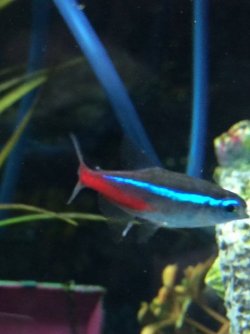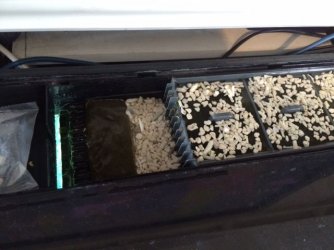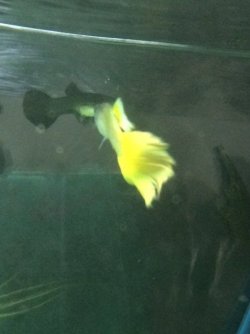Hi, im fairly new to tropical fish keeping. I acquired a 120l fish tank about 2 weeks ago, fully established and complete with 9 neons, 3platys and 3 plecos. Ive since discovered that 2 are bristlenose and one appears to be the 'common' type. Im aware hes not suitable for the tank but at the moment hes happy and small so will worry about this a little later. The tank i got second hand is called an askoll and has an underlid filtration system in place as shown in pictures. Below the initial baskets are another set of 3 baskets which contain the white pellets. What i would like to know is what exactly are all the sponges, what is the sponge to the far left and what on earth are the white pellets. The guy i got the tank off was very vague. I currently have crushed coral in there as this is buffering the ph to around 6.5 to 7. My tap water is hideously low around 5.5-6. All tests have been done using liquid tests and they are all zero except nitrates which is around 30. I recently added my 2male guppies to the tank and bought 3 females. they all seemed fine and no territorial issues or nipping. I did not quarantine the 3 females though and it seems they have brought something in with them (big mistake and lesson learnt) we returned 1 to the shop and the guy felt it had an ulcer (white patch on side), he gave waterlife fin rot and ulcer treatment which we have started using. The next day one of the other female guppys had white stuff around mouth, looked like spots but also a little fluffy, she died overnight and one of the neon tetras has 2 small white spots...see picture. Also my male guppy has a bit of a shredded fin, with slight red spot (unable to get tidy pic as hes very quick. and another neon seems to have the same. Im stuck in that i cant use salt and also dont know if i have ick, fungus or something else? at the moment im sticking with alot of gravel hoovering, partial water change and using the above treatment. sorry for the long winded post but id like to know what parts i have exactly in my filter and what they do, and also what on earth is going on with the fish. The remaining fish mostly seem fine except a platy is quiet but im worried for them. thanks in advance for the help. ive done extensive readin on stocking, nitrogen cycle etc but it seems im very much at the beginning of a steep learning curve. Last point is there are currently 4 platy fry in a breeding net. they are about 3 days old and just appeared from who knows where  \
\
 \
\




